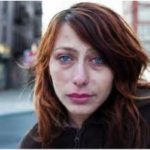Point of clarification: I didn’t mean to imply that people who take opioids for reasons other than physical pain are to blame for the opioid “crisis” or the overdose epidemic. Let me retrace my steps.
I recently pasted and posted my article, published in The Guardian, arguing that opiates prescribed for people in pain are wrongfully blamed for the overdose epidemic. All true. But I also stipulated that the illicit use of pharmaceutical opioids was a link in the chain to opioid addiction and, in the current fentanylized environment, to the overdose epidemic.
So what does that say about us former and still active opioid “abusers” and addicts? I have a pretty good sense that most of my readership, like me, went down the path of pilfering …e.g, stealing, buying, faking, or otherwise getting pharmaceutical opioids that weren’t prescribed for our physical pain. We found those pills any way we could, because we needed them to soothe another kind of pain.
I thought, since sharing my article with you, that you might feel I’m pointing the finger of blame at “you addicts” who’ve found a loophole in the prescription opioid cycle, who’ve found a way to acquire pharmaceuticals “illicitly.”
No way. Having had two spinal surgeries in the last seven years, I’m definitely attuned to the pain relief issue. In fact, though my back’s been in quite good shape since the surgeries (praise be to physio, Tai Chi, and a great healthcare system here in the Netherlands), I had a horrific episode a couple of years ago. I was attending a conference in Geneva (focused on addiction, somewhat ironically) and my back went into gridlock spasm. The pain was so intense that I literally couldn’t move, couldn’t walk, couldn’t sit. Loud noises came out of my mouth that I seemed unable to  control. I had people coming up to me while I stood rigid, paralyzed, in the middle of a busy hotel lobby between session, and carry or drag me to the nearest sofa (it was a pretty plush hotel). And even sitting, I could not unspasm; my body seemed like a lighting rod that would not stop zapping. People I didn’t know — strangers — found me a wheelchair, wheeled me to the elevator, got me down to the street level and called a taxi to take me to the hospital. And the next day, at a doctor’s office near my own hotel, I was howling so bad that the doctor and his assistants dragged me out of the waiting room because I was scaring the other patients. They then lifted me into a taxi — back to the hospital again. When all I really needed was a shot of morphine or a substantial dose of oxycodone. Getting high was the furthest thing from my mind.
control. I had people coming up to me while I stood rigid, paralyzed, in the middle of a busy hotel lobby between session, and carry or drag me to the nearest sofa (it was a pretty plush hotel). And even sitting, I could not unspasm; my body seemed like a lighting rod that would not stop zapping. People I didn’t know — strangers — found me a wheelchair, wheeled me to the elevator, got me down to the street level and called a taxi to take me to the hospital. And the next day, at a doctor’s office near my own hotel, I was howling so bad that the doctor and his assistants dragged me out of the waiting room because I was scaring the other patients. They then lifted me into a taxi — back to the hospital again. When all I really needed was a shot of morphine or a substantial dose of oxycodone. Getting high was the furthest thing from my mind.
 So why couldn’t they provide that? Even at the hospital, I had to lie on a gurney intermittently screeching in pain for over an hour before the morphine came. People passing by had pity written all over their faces. Has the opioid scare infested Europe too? Not as much as the US, but yes, seemingly, to a degree.
So why couldn’t they provide that? Even at the hospital, I had to lie on a gurney intermittently screeching in pain for over an hour before the morphine came. People passing by had pity written all over their faces. Has the opioid scare infested Europe too? Not as much as the US, but yes, seemingly, to a degree.
So physical pain is one thing, and I have immense sympathy and empathy for those who experience it regularly. (For me, thankfully, this was a rare episode).
But I’ve also experienced the other kind of pain, the overwhelming darkness that invades your thoughts and feelings to such an extent that you are paralyzed in another way. You can’t think, or feel, or communicate, because it hurts so much just to exist. Opioids can provide enormous relief  from that kind of pain as well. But of course no doctor will prescribe opioids for your depression, unless you’re getting methadone or Suboxone because you’re a “registered” addict, whatever that happens to mean in your corner of the world. Maybe just lining up at some seedy clinic, maybe being sneered at, maybe not being able to get a job, maybe having your license revoked…hell, in the Philippines it means being lined up and shot.
from that kind of pain as well. But of course no doctor will prescribe opioids for your depression, unless you’re getting methadone or Suboxone because you’re a “registered” addict, whatever that happens to mean in your corner of the world. Maybe just lining up at some seedy clinic, maybe being sneered at, maybe not being able to get a job, maybe having your license revoked…hell, in the Philippines it means being lined up and shot.
 When we’re in that kind of pain, and if we’re pretty sure that opioids can help relieve it, we’re trapped. We can’t get an opioid prescription for emotional relief. (Don’t get me started on “antidepressants” — SSRIs — which are so much less effective than hoped, which carry their own batch of side effects, and which require as much tapering as opioids to minimize withdrawal symptoms.) So we buy, borrow, steal, forge, or do whatever we have to do to acquire the medication that can bring us back to some semblance of normality, of peace.
When we’re in that kind of pain, and if we’re pretty sure that opioids can help relieve it, we’re trapped. We can’t get an opioid prescription for emotional relief. (Don’t get me started on “antidepressants” — SSRIs — which are so much less effective than hoped, which carry their own batch of side effects, and which require as much tapering as opioids to minimize withdrawal symptoms.) So we buy, borrow, steal, forge, or do whatever we have to do to acquire the medication that can bring us back to some semblance of normality, of peace.
I just want to clarify that I don’t see you, me, us addicts — former or “active” — as villains in this scenario. Yes, we do “divert” pain pills to deal with our (sometimes enormous) psychological vulnerabilities. But we only do that because our back is against the wall. Only because there’s no other choice.
That struggle was not the point of my article, and you (us) were not the audience I was targeting. But I am so with you, you don’t even know it. And if your diverted pharmaceuticals have led to (or replaced or complemented) heroin, which might have led to fentanyl, which might kill you, I see that as a shameful tragedy. But I don’t blame you. I blame the system that has vilified, isolated, and abandoned you. I don’t blame you. In fact, the risks you (we) face are so very grave, simply because we can’t (through normal channels) get the pharmaceuticals that can help us, we move to the front of the line of sufferers.
If I had to choose between battling emotional anguish and physical pain, I’d be hard pressed to decide which to try first.
There is no reason why either kind of pain should be left untreated in this age of pharmaceutical evolution. But I’m not going to be able to convince the head of the DEA, the governor of Maine, or Donald Trump that both kinds of pain qualify for care. I’m just starting with the most obvious.

Leave a Reply